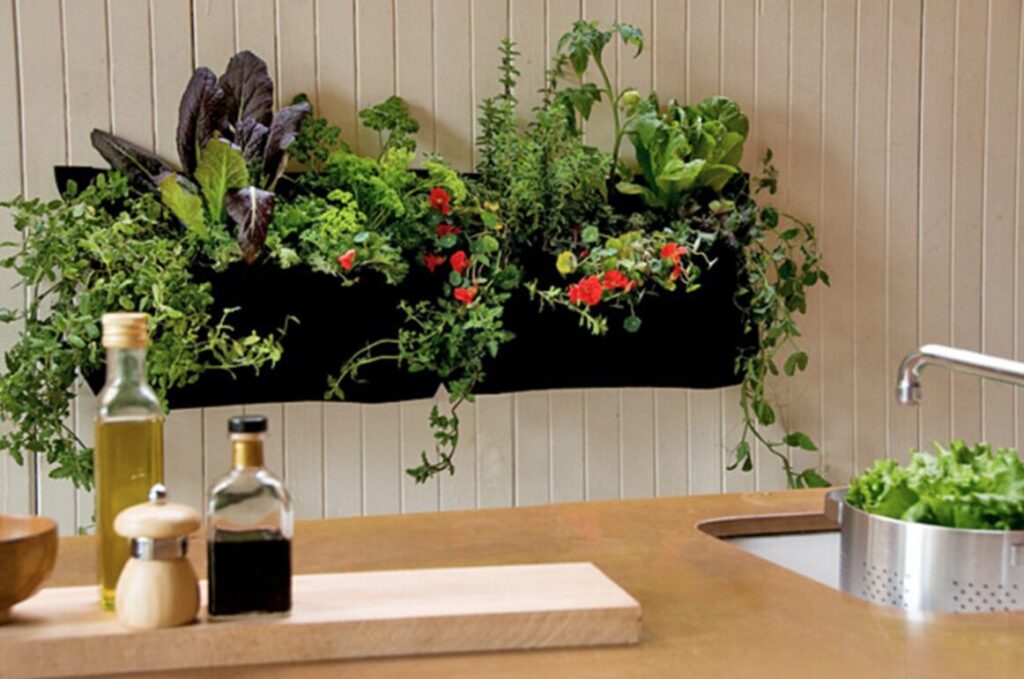Are you looking to boost your relaxation level inside your home while adding a pop of greenery? As you may already know, indoor gardens are an excellent way to help keep your stress levels low, while breathing new life into your home.
The good news is that you don’t need a green thumb to set up a successful indoor garden. You just need the right plants, the right space, and a little bit of dedication to bring your dream indoor green space to life. Here’s how to get started.
Figure out which rooms get sunlight from the east
Since most plants do well when they’re exposed to sunshine earlier in the morning, it’s a good idea to set up your indoor garden somewhere in your house where there’s east-facing light. You might have a full room you can dedicate to your indoor space, but a separate shelf or even a small window display is enough to create a functional green space.
What to do if you don’t have enough light in your house
Even if you live in a sunny area, it’s possible your home is covered by shade or your windows aren’t well positioned within your home for an indoor garden to thrive. In this case, it’s a good idea to lean into plants that enjoy less sunlight, like Chinese evergreen plants or snake plants. This way, you can still enjoy live greenery in your home without worrying about low-sun areas. This is also helpful if you live in an area of the U.S. with low sunlight in the wintertime, like Michigan and other northern states.
Choose the right plants
Some plants are always going to do better when planted outside, while others are better suited to be cared for indoors. Making sure you pick the right plants is key if you want your indoor green space to flourish.
Spider plants, aloe, and even herbs, such as rosemary and basil, are a few lower-maintenance plants that tend to grow well indoors. Start with just a few different types of plants, so you don’t have to worry about memorizing too many watering schedules at once.
Pick your plant’s home carefully
Make sure you know the right way to care for your plants by picking the right vessel for them to live in. This includes the pot you plant it in, but can also include where it’s stored (like a glass cabinet turned into a greenhouse to keep humidity sealed inside).
Some plants do well in hanging pots while others need more structure or space to grow. If you’re choosing a plant that’s known to grow tall, make sure you have larger replacement pots on hand to move it into as it matures.
Use grow bulbs to mimic sunlight
Whether you get adequate sunlight or not, grow bulbs can help your plants get the light exposure they need to thrive. Grow bulbs are essential if you’re storing your plants in a cabinet, and can even help provide under-shelving light if you keep your plants on a large bookcase.
Stop overwatering your plants
One of the biggest mistakes new or younger plant owners make is watering their plants too often, which may damage them. Some plants need water every day and others only need to be topped off once a week. How do you know for sure?
Experts recommend pushing your finger into the soil of your plant about 1 inch deep. If it feels moist, your plant doesn’t need water. But if it’s dry, then it’s time to water your plant.
Pick the right fertilizer and soil
Indoor plants need mineral-rich potting soil to grow inside, which is different from the soil you’d buy for outdoor plants. Make sure you buy a high-quality indoor mix for your indoor garden. Help make sure your plants are getting all the nutrients they need by adding a fertilizer designed for indoor plants every month.
Be careful of poisonous plants
If you have pets, it’s important to know that not all indoor plants are safe for pets. Even if your plant is out of reach of your furry companion, if any leaves fall and your pet ingests them, it could cause serious problems. Look for pet-safe plants, and consult with your vet if you have any questions.
The same goes for children. Some plants are toxic if ingested, so if you have young kids who like to put things in their mouths, look for plants that are safe on the off chance your child eats any part of it.
Don’t be afraid of faux plants
Even if having live plants is important to you, it’s okay to mix and match live and fake plants in your indoor garden. For example, maybe keeping an olive tree indoors is too much effort for you, so you opt for a faux tree, but you can still keep real plants along your windowsill. This can make the upkeep easier, while still maintaining a lush and vibrant green aesthetic. And, you don’t have to worry about remembering to water them daily, making them a lower-maintenance option.
10 Clever Indoor Herb Garden Ideas


